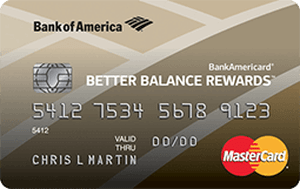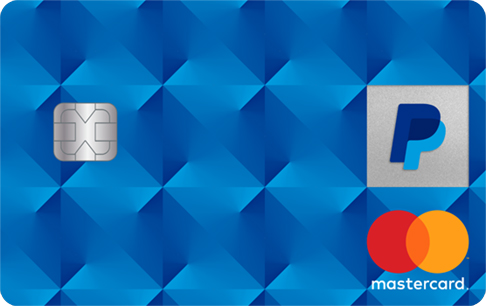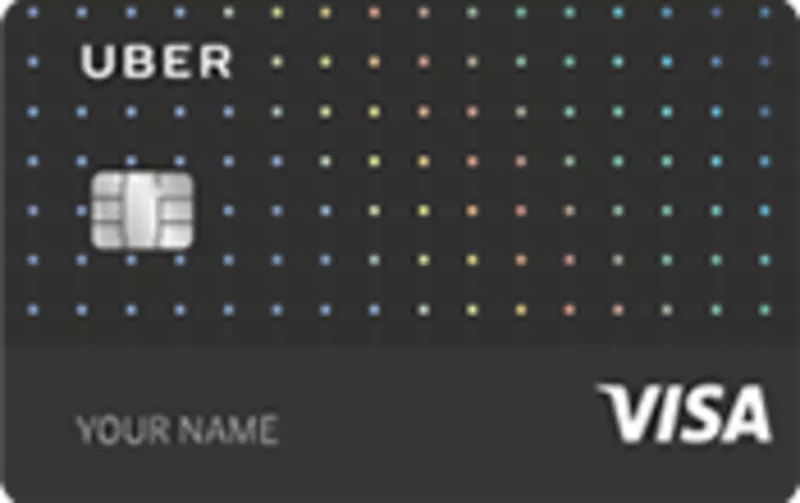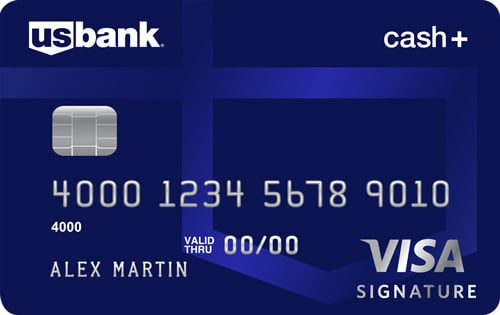- myFICO® Forums
- FICO Scoring and Other Credit Topics
- General Credit Topics
- Re: How often do I get reports from Annual Credit ...
- Subscribe to RSS Feed
- Mark Topic as New
- Mark Topic as Read
- Float this Topic for Current User
- Bookmark
- Subscribe
- Mute
- Printer Friendly Page
How often do I get reports from Annual Credit Report?
Is your credit card giving you the perks you want?
Browse credit cards from a variety of issuers to see if there's a better card for you.
- Mark as New
- Bookmark
- Subscribe
- Mute
- Subscribe to RSS Feed
- Permalink
- Report Inappropriate Content
Re: How often do I get reports from Annual Credit Report?
Last year I had a couple CLDs (this can happen to people with scores in the 800s)
Should one keep credit scores low by increasing utilization or take extra inquiries to prevent this? I have never heard this happen before.









 Starting Score: Ex08-732,Eq08-713,Tu08-717
Starting Score: Ex08-732,Eq08-713,Tu08-717Current Score:Ex08-795,Eq08-807,Tu08-787,EX98-761,Eq04-742
Goal Score: Ex98-760,Eq04-760
Take the myFICO Fitness Challenge
History of my credit
- Mark as New
- Bookmark
- Subscribe
- Mute
- Subscribe to RSS Feed
- Permalink
- Report Inappropriate Content
Re: How often do I get reports from Annual Credit Report?
CLDs can happen with 850 scores if you don't utilize the credit limits provided to you. Remember, a credit limit needs funding to back it up and if you don't use the limit, that funding may go unused and the investors in that funding will earn nothing on it. It's not COMMON for CLD for lack of usage, but it's happening more as lenders have access to real time analytics to look over.
As for CGID -- I apologize, I didn't read your original comment properly on my phone and didn't see the CLD part.
While this isn't a government site, I like their verbiage! Link here: https://consumercomplianceoutlook.org/2013/second-quarter/adverse-action-notice-requirements-under-e...
Quote in blue:
Regulation B defines adverse action as:
- A refusal to grant credit in substantially the amount or on substantially the terms requested in an application unless the creditor makes a counteroffer (to grant credit in a different amount or on other terms), and the applicant uses or expressly accepts the credit offered;
- A termination of an account or an unfavorable change in the terms of an account that does not affect all or substantially all of a class of the creditor’s accounts; or
- A refusal to increase the amount of credit available to an applicant who has made an application for an increase.
A CLD would appear, to me, to be an unfavorable change.
The bankers forum seems to agree, link here: https://www.bankersonline.com/forum/ubbthreads.php/topics/2052134
- Mark as New
- Bookmark
- Subscribe
- Mute
- Subscribe to RSS Feed
- Permalink
- Report Inappropriate Content
Re: How often do I get reports from Annual Credit Report?
@Subexistence wrote:
Last year I had a couple CLDs (this can happen to people with scores in the 800s)
Should one keep credit scores low by increasing utilization or take extra inquiries to prevent this? I have never heard this happen before.
Hi SubEx. I should have said this can happen to anyone, even people with scores in the 800s. Adding those two words would have prevented your very understandable confusion. Point being that CLDs are not initiated by an issuer solely because of it thinks you are at risk of becoming delinquent.
Under no circumstances should a person ever attempt to lower his score. It's fine, however, for one's score to be lowered because one is leveraging a decent score to acquire something good (a home, a car, a new credit card with a big signup bonus, etc.). But never try to lower one's score for the sake of lowering it.
Great response to your question by ABCD, btw. As data mining and trended data become more common, we may see more issuers using various tools (proprietary or made by companies like FICO) to assess a person's profitability. The big FICO models people are familiar with here on the forum (the mortgage models, FICO 8 Classic, FICO 9 Bankcard Enhanced, FICO 8 Auto, etc.) do not in themselves assess profitability, except indirectly, in the sole sense that people who become delinquent are costly. You can tell that the big scores do not measure profitability per se, however, because people with very high scores generally bring in negative profit to CC issuers. But FICO does already make specialized tools to help CC issuers assess profitability of their customers, and we'll no doubt see more of that (as ABCD says) especially if most CC issuers start reporting payment history as part of their trended data reporting.
- Mark as New
- Bookmark
- Subscribe
- Mute
- Subscribe to RSS Feed
- Permalink
- Report Inappropriate Content
Re: How often do I get reports from Annual Credit Report?
But FICO does already make specialized tools to help CC issuers assess profitability of their customers, and we'll no doubt see more of that (as ABCD says) especially if most CC issuers start reporting payment history as part of their trended data reporting.
Are you saying card issuers do not like seeing PIF? How can we game these specialized tools so unprofitable customers like me can continue to be unprofitable?









 Starting Score: Ex08-732,Eq08-713,Tu08-717
Starting Score: Ex08-732,Eq08-713,Tu08-717Current Score:Ex08-795,Eq08-807,Tu08-787,EX98-761,Eq04-742
Goal Score: Ex98-760,Eq04-760
Take the myFICO Fitness Challenge
History of my credit
- Mark as New
- Bookmark
- Subscribe
- Mute
- Subscribe to RSS Feed
- Permalink
- Report Inappropriate Content
Re: How often do I get reports from Annual Credit Report?
See if your state permits additional free reports. For example, Georgia law permits you two free credit reports each year from every credit reporting agency (this includes ChexSystems, btw), and this is IN ADDITION to your one annual credit report for free under FACTA (annualcreditreport.com). Based on the Transunion order form, it looks like Colorado, Maine, Maryland, Massachusetts, Mississippi, New Jersey, Puerto Rico, and Vermont MAY also permit you at least one additional report.
- Mark as New
- Bookmark
- Subscribe
- Mute
- Subscribe to RSS Feed
- Permalink
- Report Inappropriate Content
Re: How often do I get reports from Annual Credit Report?
@Subexistence wrote:
But FICO does already make specialized tools to help CC issuers assess profitability of their customers, and we'll no doubt see more of that (as ABCD says) especially if most CC issuers start reporting payment history as part of their trended data reporting.Are you saying card issuers do not like seeing PIF? How can we game these specialized tools so unprofitable customers like me can continue to be unprofitable?
Nope. I am saying that CC issuers like their customers to be profitable. There are two ways that customers can generate big profits for issuers:
(1) Carrying large balances each month
(2) Spending huge amounts of money
#1 generates money via interest.
#2 generates money via swipe fees.
In general, the two groups tend to be separate. Suppose Bob and George each have a credit limit of $10k. If Bob is carrying 9k month to month, then he's likely spending very little (though obviously at one time he was spending more). If George is spending 9k each month, then he almost certainly is is carrying almost nothing -- he's likely paying in full.
The profitability of group #1 is mitigated (perhaps sharply) by the fact that it is generating few swipe fees (low spending) and more importantly is much more likely than #2 to become delinquent or fail to pay altogether, which is very costly for the issuer.
Basically consumer profitability (for CC issuers) lies on a spectrum. At one end are those revolvers who generate a lot of interest revenue but somehow never miss a payment as well as transactors who spend a lot, perhaps getting only 1% in cash back. At the other end are consumers who only open cards with an aim to rake in bonuses, and then after that close them or PC them to no annual fee cards and buy a loaf of bread once a year on them -- or if they do generate spend they are careful to get at least 3% cashback (typically 4-5%) by choosing categories properly. This end of the spectrum involves negative profit for the CC issuer.
The Holy Grail of data mining would be to somehow figure out which Revolvers had nonetheless a low chance of default. CC issuers should be in intense competition to get these people addicted to THEIR cards, much the way that dope pushers in the hood want reliable junkies who will somehow always have some money and will entail little expense in muscle and control. Less difficult would be whether a transactor is especially profitable for one's company -- you can just look at how much he spends. Also part of the Grail ways of identifying CC bonus chasers (described above) who produce negative revenue without generating anything else.
My advice if you want ways to "game" such detectors is to avoid obvious bonus chasing behavior. That would be opening a card, spending a lot, then closing it at month 3 or 4 -- or if you don't close it, dropping the spend to $0. You might be able to fool to some extent such bonus chaser detectors by keeping cards open (but PCing them, which is not evident on a credit report) and also making sure you never stop all spending on a card at month 3. Keep using it every other month, even if it is for something small.
Under no circumstances, however, should you spend more money in total than you would if you had debit cards only. If you do then you are doing what the CC issuers want -- elevating your spending because you have cards. You'll do much better by keep spending low and saving money.
- Mark as New
- Bookmark
- Subscribe
- Mute
- Subscribe to RSS Feed
- Permalink
- Report Inappropriate Content
Re: How often do I get reports from Annual Credit Report?
My advice if you want ways to "game" such detectors is to avoid obvious bonus chasing behavior. That would be opening a card, spending a lot, then closing it at month 3 or 4 -- or if you don't close it, dropping the spend to $0. You might be able to fool to some extent such bonus chaser detectors by keeping cards open (but PCing them, which is not evident on a credit report) and also making sure you never stop all spending on a card at month 3. Keep using it every other month, even if it is for something small.
Would churning business cards which do not show up on personal reports be immune to those tools or will those tools somehow make business cards detectable as well? Unfortunetly business cards have high bonus spend thresholds.
Also I have unfortunetly used my Maryland free reports last summer.









 Starting Score: Ex08-732,Eq08-713,Tu08-717
Starting Score: Ex08-732,Eq08-713,Tu08-717Current Score:Ex08-795,Eq08-807,Tu08-787,EX98-761,Eq04-742
Goal Score: Ex98-760,Eq04-760
Take the myFICO Fitness Challenge
History of my credit
- Mark as New
- Bookmark
- Subscribe
- Mute
- Subscribe to RSS Feed
- Permalink
- Report Inappropriate Content
Re: How often do I get reports from Annual Credit Report?
I'd think such tools would chiefly be aimed at personal reports.
Personally, though, I'd just avoid obvious bonus-chaser behavior (as I described earlier) while keeping real spending low (you may have some techniques for meeting minimum spend requirements that don't actually involve using real money of your own to buy stuff -- no need to discuss those here if so).
Accumulate cards and their bonuses, keep them active and if down the road a few get closed by some zealous TD-analyzing issuer who cares? You'll already have the bonus and several other cards as well.
- Mark as New
- Bookmark
- Subscribe
- Mute
- Subscribe to RSS Feed
- Permalink
- Report Inappropriate Content
Re: How often do I get reports from Annual Credit Report?
Hey there CGID!
On the previous page you mentioned receiving a few CLDs last year. At the risk of veering slightly off-topic here, can you provide any information surrounding those CLDs? Were any of them for non-use, or were they for minimal use? Can you quantify either of those based on length of time and/or spend? I think my scores/profile are probably somewhat similar to yours, so any AA taken against you could feasibly mirror something that could happen to me at some point. Any data you can provide here such as lender, CLD amount, etc. would be insightful. Thanks!
- Mark as New
- Bookmark
- Subscribe
- Mute
- Subscribe to RSS Feed
- Permalink
- Report Inappropriate Content
Re: How often do I get reports from Annual Credit Report?
At least one of the the two CLDs was at BOA and was likely triggered by my opening a new BOA card. Thus the new BOA card had a CL of 5k, and two months later a 5k CLD (10k to 5k) occurred on a different BOA account.